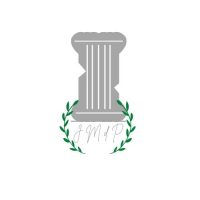Art history, also known as art histography, is a broad and encompassing term. It is the study of objects (art) over the history of humankind. Typically, historians break down the subject into more digestible segments, either by period, style, or material.
Art history is the study of the visual arts: paintings, sculptures, architecture, printmaking, and everything else under the sun. Historians are responsible for identifying, classifying, describing, and interpreting the artwork they study.
Art historians do more than enjoy the artwork they study. They analyze minute details about every piece under their purview. Through this method, historians have learned so much about cultures long gone.
Through the lens of art history, we have been able to understand cultures that didn’t leave behind a written language or understanding of their events. It lets us look into the past and begin to understand current and previous civilizations.
An art historian has two primary goals in a practical sense, which branch outward into secondary concerns. The first concern is to establish the creator of any particular piece of work. This may include additional concerns such as authentication, timeline (both in context to history and the specific artist’s career), understand historical influence, and gather data. The second concern pertains to the understanding of artistic traditions and styles.
To better understand art historians, it helps to understand the variety of periods available within our history. For example, Western Art can be broken down like so:
- Prehistoric Art (~40,000-4,000 B.C.)
- Ancient Art (30,000 B.C.-A.D. 400)
- Medieval (A.D.500-A.D. 1400)
- Renaissance (1400-1600)
- Mannerism (1527-1580)
- Baroque (1600-175)
- Rococo (1699-1780)
- Neoclassicism (1750-1850)
- Romanticism (178-1850)
- Realism (1848-1900)
- Art Nouveau (1890-1910)
- Impressionism (1865-1885)
- Post-Impressionism (1885-1910)
- Fauvism (1900-1935)
- Expressionism (1905-1920)
- Cubism (1907-1914)
- Surrealism (1917-1950)
- Abstract Expressionism, Op Art, and Pop Art (the 1950s-1960s)
- Minimalism (the 1960s-1970s)
- Contemporary Art (1970-present)
Naturally, the above list is only focused on one region (Western culture), and there are many different specific lists for art history around the world. It’s a detailed field worth looking into, with something to catch the interest of any historian.
If becoming an art historian sounds fascinating to you, know that there are many different career options available. Jobs such as art administration, exhibition organizer, antique dealer, art consultant, art gallery manager, journalist, art critic, archivist, and restorer/conservator.
Article originally published on JeanetMadurodePolanco.com










Read 0 comments and reply